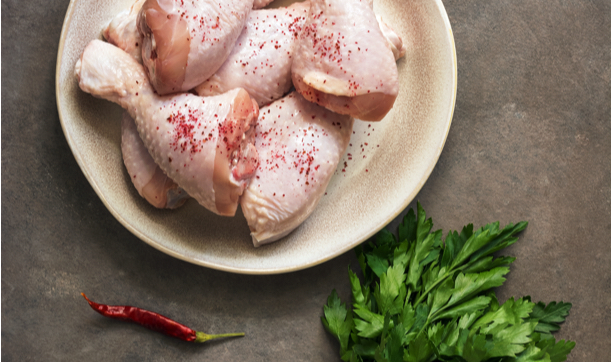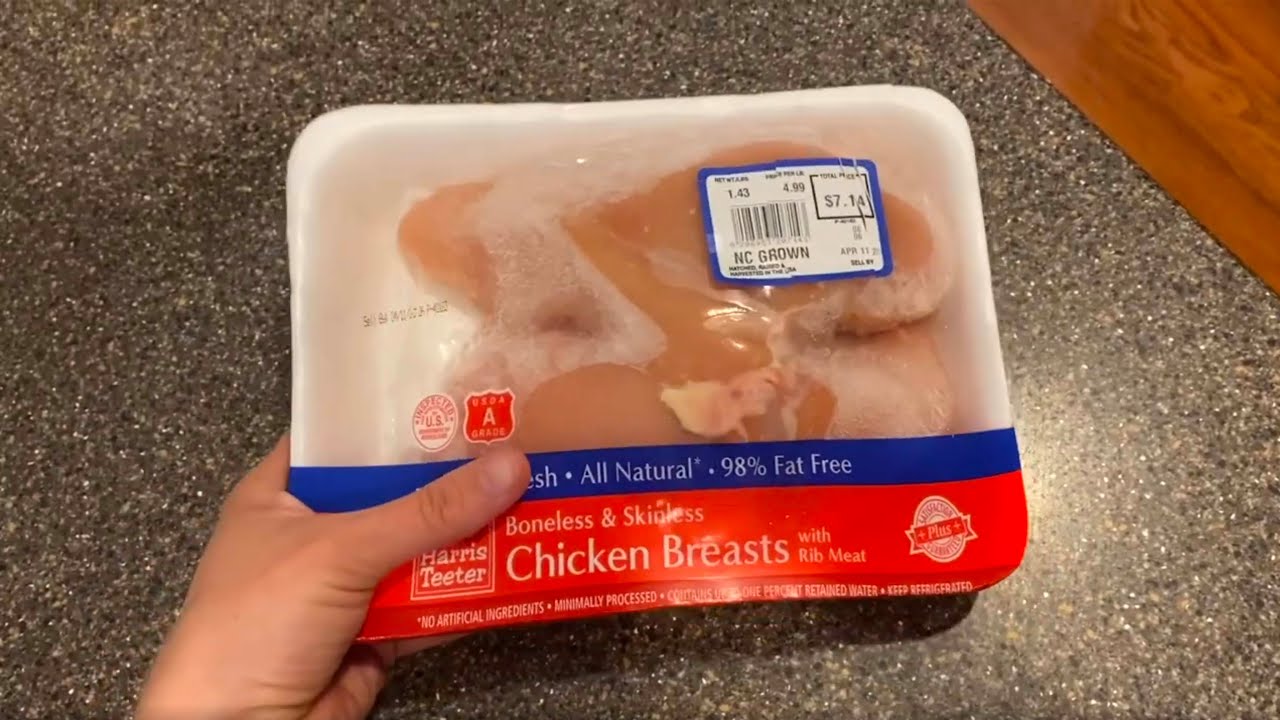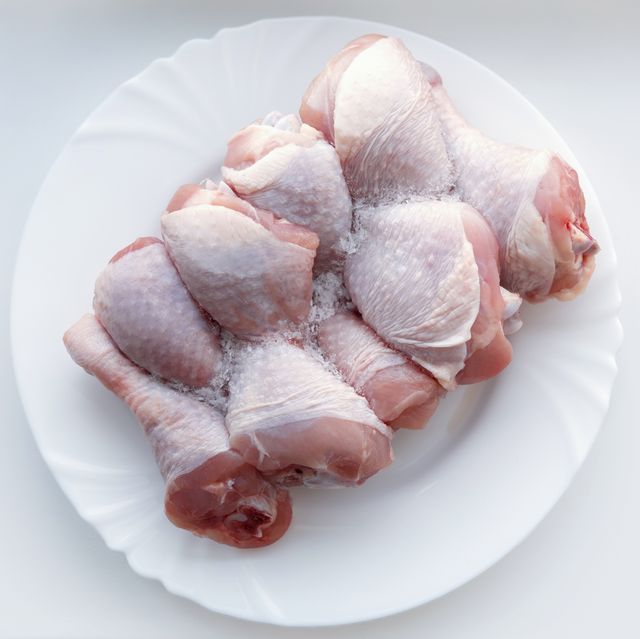Importance Of Understanding Chicken Use Or Freeze By Date

Understanding the use or freeze by date on chicken packaging is vital for ensuring food safety. The use by date indicates the last day when the chicken is at its peak quality, while the freeze by date tells you when to freeze the product to maintain its quality. By following these dates, you can prevent consuming expired chicken, which can have adverse effects on your health. It is essential to interpret these dates correctly and properly store the chicken to extend its shelf life. Regularly check for signs of spoilage and handle and cook the chicken safely to avoid any food safety risks.
Importance Of Following Use Or Freeze By Date For Chicken Safety
Following the use or freeze by date is crucial for ensuring chicken safety. These dates are carefully determined to indicate the peak quality and freshness of the chicken. Using or freezing the chicken before the designated date ensures that you consume it while it is still at its best. Consuming expired chicken can lead to foodborne illnesses and other health risks. By adhering to these dates, you can minimize the risk of consuming spoiled or contaminated chicken and protect yourself and your family from potential foodborne diseases.
Effects Of Consuming Expired Chicken
Consuming expired chicken can have detrimental effects on one’s health. When chicken expires, bacteria such as Salmonella and Campylobacter can multiply and cause foodborne illnesses. These illnesses can result in symptoms like nausea, vomiting, diarrhea, stomach cramps, and fever. In severe cases, it can lead to dehydration and even hospitalization. Moreover, expired chicken may also contain harmful toxins produced by bacteria that can further worsen the health risks. To prevent these effects, it is essential to always check the use or freeze by date on chicken packaging and discard any expired chicken to ensure food safety.
How To Interpret Use Or Freeze By Date On Chicken Packaging

When looking at the use or freeze by date on chicken packaging, it is important to understand its significance for food safety. The use-by date indicates the last date recommended for consuming the chicken at its peak quality. It is not a safety date but rather a freshness indicator. On the other hand, the freeze-by date suggests when the chicken should be frozen to maintain its quality. It is important to note that the freeze-by date is not a purchase or safety date. By paying attention to these dates, consumers can make informed decisions about the freshness and shelf life of their chicken.
Deciphering Date Labels On Chicken Products
Deciphering the date labels on chicken products is essential for ensuring food safety. When examining the packaging, look for the use-by date and freeze-by date. The use-by date indicates the last day the chicken is safe to consume while maintaining its quality. It is important to consume the chicken before this date to avoid any risk of foodborne illness. On the other hand, the freeze-by date suggests when the chicken should be frozen to maintain its freshness. By understanding and following these date labels, consumers can make informed decisions about the freshness and safety of their chicken.
Factors Influencing The Expiration Date Of Chicken
Several factors can influence the expiration date of chicken.
- Packaging: The type of packaging used can affect the shelf life of chicken. Vacuum-sealed packaging helps to preserve freshness and extend the expiration date.
- Storage temperature: Chicken should be stored at a consistent temperature below 40°F (4°C) to prevent bacterial growth. Higher temperatures can accelerate the spoilage process and reduce the shelf life of the chicken.
- Handling and cross-contamination: Proper handling and avoiding cross-contamination with other raw foods can prevent the growth of harmful bacteria and extend the expiration date.
- Type of chicken: The cut and type of chicken, such as boneless or bone-in, can also influence the expiration date. Bone-in chicken tends to have a shorter shelf life than boneless chicken.
By considering these factors and following safe handling and storage practices, consumers can maximize the shelf life of chicken and ensure its freshness and safety.
Guidelines For Properly Storing Chicken

Proper storage of chicken is essential to maintain its freshness and prevent the growth of harmful bacteria. Here are some guidelines to follow when storing chicken:
- Refrigeration: Chicken should be stored in the refrigerator at a temperature below 40°F (4°C). Make sure to place it in the coldest part of the fridge, such as the bottom shelf.
- Packaging: If the chicken is in its original packaging, ensure that it is tightly sealed or repackage it in airtight containers or freezer bags. This helps to prevent cross-contamination and maintain its quality.
- Separate from other foods: Keep raw chicken separate from other foods, especially those that will be consumed raw or cooked at lower temperatures. This prevents the spread of bacteria.
- Freezing: If you are not planning to use the chicken by its use-by date, it is recommended to freeze it. Properly wrap the chicken in freezer-safe packaging, and label it with the date.
By following these storage guidelines, you can extend the shelf life of chicken, maintain its freshness, and ensure food safety. Remember to always prioritize food safety and adhere to the recommended storage practices.
Proper Storage Methods To Extend The Shelf Life Of Chicken
Proper storage methods play a crucial role in extending the shelf life of chicken. To maintain freshness and prevent the growth of harmful bacteria, it is important to store chicken in the refrigerator at a temperature below 40°F (4°C). Place it on the coldest part of the fridge, such as the bottom shelf. Additionally, tightly seal the chicken in its original packaging or repackage it in airtight containers or freezer bags to prevent cross-contamination. Keeping raw chicken separate from other foods further reduces the risk of bacterial spread. If not consumed by the use-by date, freezing the chicken in freezer-safe packaging helps preserve its quality for a longer duration. By following these storage guidelines, individuals can ensure the safety and freshness of their chicken for an extended period.
Importance Of Refrigeration And Freezing For Chicken Safety
Proper refrigeration and freezing play a crucial role in ensuring the safety of chicken. Refrigeration at temperatures below 40°F (4°C) slows down the growth of bacteria, preventing them from multiplying and causing foodborne illnesses. Storing chicken in sealed containers or packaging helps to reduce the risk of cross-contamination with other foods in the refrigerator. Freezing chicken at temperatures below 0°F (-18°C) helps to preserve its quality and extend its shelf life. By following these storage methods, individuals can maintain the freshness of chicken and reduce the risk of foodborne illnesses.
Signs Of Spoiled Chicken And Food Safety Risks

Signs of Spoiled Chicken-
It is important to be able to identify signs of spoiled chicken to avoid consuming contaminated food. Some common signs include a slimy or sticky texture, off odors, and discoloration. If the chicken has a pungent smell or shows any signs of mold, it should be discarded immediately. These indications suggest that the chicken has been contaminated or has started to spoil, which can pose serious health risks if consumed.
Food Safety Risks-
Consuming spoiled chicken can result in foodborne illnesses caused by bacteria such as Salmonella and Campylobacter. These bacteria can lead to symptoms such as nausea, vomiting, abdominal pain, and diarrhea. In severe cases, they can even cause more serious complications. To minimize the risk of illness, it is essential to practice proper food safety measures, including storing chicken at the correct temperatures, cooking it thoroughly, and discarding any chicken that shows signs of spoilage.
Identifying Signs Of Spoiled Chicken
When it comes to identifying signs of spoiled chicken, there are a few telltale signs to watch for. Firstly, check for any sliminess or stickiness on the chicken’s surface. This is a clear indication that the chicken has started to spoil. Secondly, pay attention to any unusual or off odors coming from the chicken. If it emits a pungent or foul smell, it is likely spoiled. Finally, check for any discoloration. If the chicken has turned gray or has any green or yellow patches, it should be discarded immediately. These signs of spoilage indicate that the chicken has been contaminated and consuming it can pose serious health risks. It is always better to be safe and discard any chicken that shows these signs.
Potential Health Risks Associated With Consuming Spoiled Chicken
Consuming spoiled chicken can pose serious health risks. Bacteria such as Salmonella, Campylobacter, and Escherichia coli (E. coli) can grow in spoiled chicken and cause foodborne illnesses. These bacteria can lead to symptoms like nausea, vomiting, abdominal cramps, diarrhea, and even more severe complications in vulnerable individuals, such as the elderly, young children, and those with weakened immune systems. In some cases, consuming spoiled chicken can result in a condition called food poisoning, which can be life-threatening. It’s crucial to be aware of the signs of spoiled chicken and to discard it immediately to avoid these potential health risks.
Tips For Safely Handling And Cooking Chicken

When it comes to safely handling and cooking chicken, there are a few important tips to keep in mind. First and foremost, always wash your hands thoroughly with soap and water before and after handling raw chicken. This helps to prevent the spread of bacteria. Additionally, it’s crucial to store raw chicken separate from other foods to avoid cross-contamination. Use separate cutting boards, utensils, and plates for raw chicken to prevent the spread of bacteria to other foods. Finally, ensure that chicken is cooked to a safe internal temperature of 165°F (74°C) to kill any harmful bacteria. Use a meat thermometer to accurately check the temperature and avoid undercooking. By following these tips, you can ensure that your chicken is safely handled and cooked to perfection.
Safe Practices For Handling Raw Chicken
When handling raw chicken, it is important to follow safe practices to prevent the spread of bacteria. Firstly, always wash your hands thoroughly with soap and water before and after handling chicken. Use separate cutting boards, utensils, and plates for raw chicken to avoid cross-contamination with other foods. Ensure that any surfaces, tools, or utensils that come into contact with raw chicken are properly cleaned and sanitized. It is also recommended to store raw chicken in leak-proof containers to prevent the juices from dripping onto other foods. By following these safe handling practices, you can minimize the risk of foodborne illnesses.
Proper Cooking Techniques To Ensure Chicken Safety
Proper cooking techniques are essential to ensure chicken safety and prevent the risk of foodborne illnesses. When cooking chicken, it is important to cook it thoroughly until it reaches an internal temperature of 165°F (74°C). This ensures that any harmful bacteria present in the chicken are killed. Using a meat thermometer is the most accurate way to determine the internal temperature. It is also important to avoid cross-contamination by using separate utensils and cutting boards for raw and cooked chicken. By following these cooking techniques, you can enjoy delicious and safe chicken meals.
Understanding Chicken Use Or Freeze By Date: FAQs

Clarifications On Food Safety Concerns Regarding Chicken Dates
When it comes to food safety concerns regarding chicken dates, it is important to prioritize caution and adhere to recommended guidelines. While some may wonder if it is safe to consume chicken that smells fine but has passed its “Use By” date, it is still not recommended. Bacterial growth can occur even if the chicken appears and smells fine. It is best to always err on the side of caution and follow the expiration dates provided. By doing so, you can ensure the safety and well-being of yourself and your loved ones.
FAQ About Understanding Chicken Use Or Freeze By Date: Food Safety Tips
Q: What does “Use By” and “Freeze By” date mean on chicken packaging?
A: The “Use By” date indicates the last date recommended for the use of the product while it’s at its peak quality. The “Freeze By” date suggests the last date to freeze the product to maintain its quality and safety.
Q: Is it safe to consume chicken after the “Use By” date?
A: It is not recommended to consume chicken after the “Use By” date as its quality and safety might be compromised. It is better to discard chicken beyond this date to prevent foodborne illnesses.
Q: Can chicken be frozen even after the “Use By” date has passed?
A: Yes, if the chicken was frozen before or on the “Freeze By” date, it is safe to freeze it even if the “Use By” date has passed. Freezing helps preserve the quality of the chicken for a longer period.
Q: How do I properly store chicken to maximize its shelf life?
A: Store chicken in the coldest part of the refrigerator at 40°F (4°C) or below. If not planning to use it within a few days, freeze it before the “Freeze By” date to extend its shelf life.
Q: What are the signs that chicken has gone bad even before the expiration date?
A: Signs that chicken has gone bad include a foul odor, slimy texture, changes in color, or the presence of mold. If you notice any of these signs, it is best to discard the chicken to avoid food poisoning.
Q: Can I rely solely on the expiration date to determine if chicken is safe to eat?
A: While the expiration date is a good guideline, it’s important to also consider the storage conditions of the chicken. Proper refrigeration and handling practices play a crucial role in extending the freshness and safety of the chicken.

ToroGrill Canada is excited to share our one-of-a-kind and authentic South American BBQ flavors with the wonderful people of Canada. Our journey began with a passion for bringing South America’s rich and vibrant culinary traditions to a new audience, and we have been dedicated to this mission ever since. Our story is one of inspiration, hard work, and the pursuit of excellence. Every recipe, every ingredient, and every cooking technique has been carefully honed and perfected to ensure that when you take a bite of our food, you experience the true essence of South American BBQ.